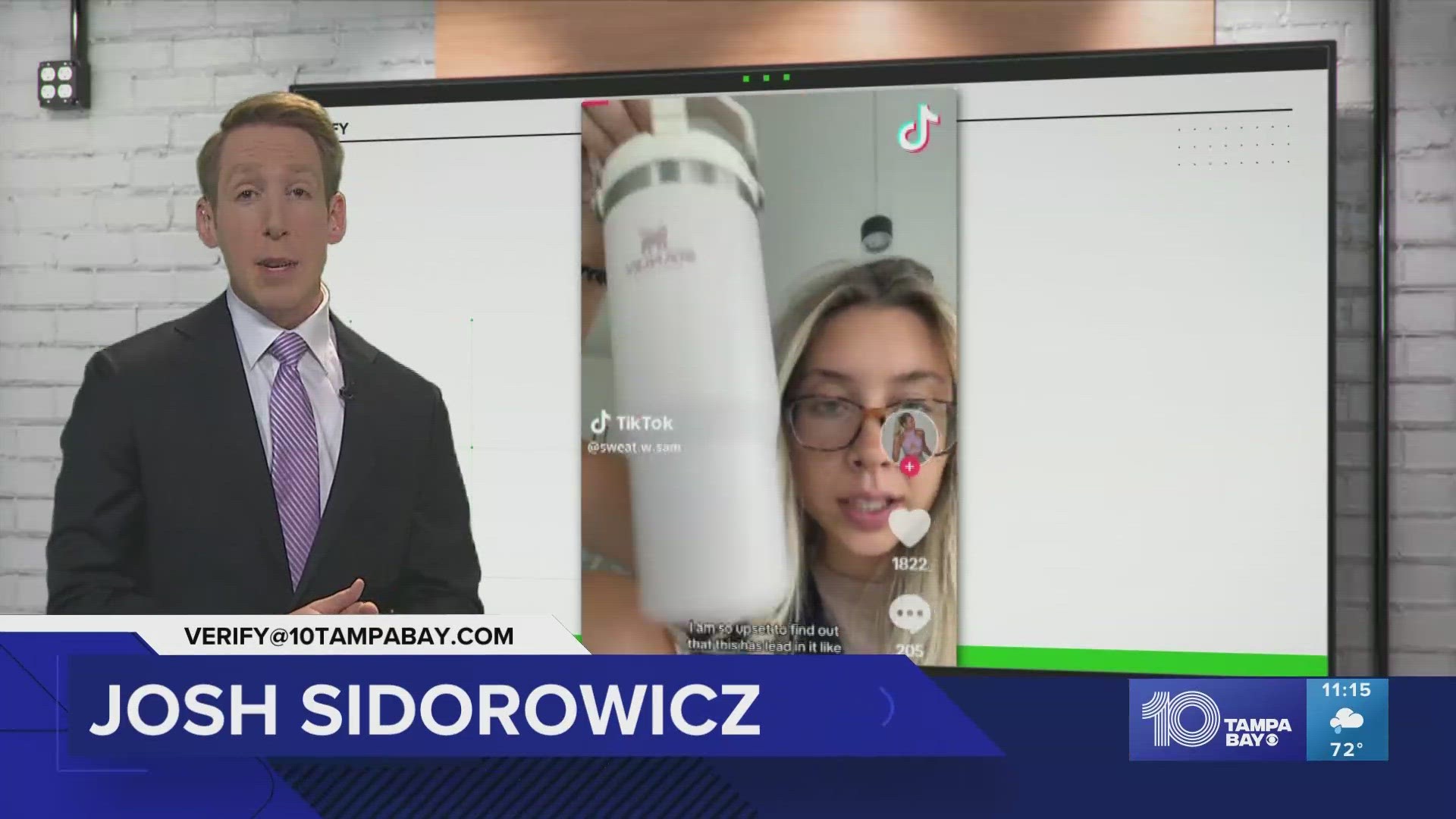ST. PETERSBURG, Fla. — With Stanley drinking cups taking the internet by storm, we’ve verified scammers are using social media to advertise fake discounts. But now some viral posts are questioning the safety of these trendy mugs.
In posts being shared and liked thousands of times on TikTok and Instagram, users claim the insulated tumblers contain lead.
The account “Lead Safe Mama” includes several posts appearing to show results of at-home lead tests on the cups.
THE QUESTION
Do Stanley cup tumblers contain lead?
THE SOURCES
- Stanley International
- U.S. Environmental Protection Agency (EPA)
- Mayo Clinic
THE ANSWER
Yes, Stanley says lead is used in the manufacturing process of its cups.
WHAT WE FOUND
A spokesperson for Stanley International told our VERIFY team its cups do contain a small amount of lead.
Stanley seals its insulated products with an industry-standard pellet that includes some lead. You’ll find the pellet underneath a small cap on the bottom of your Stanley tumbler.
The lead is inaccessible to consumers, according to Stanley, unless that stainless steel cover is damaged. So liquid inside the mug should not come into contact with the pellet.
In a statement to our VERIFY team, a company spokesperson explained, "We seal our vacuum insulated stainless steel products with an industry-standard pellet that includes some lead. The pellet is completely enclosed by a stainless-steel cover, making it inaccessible to users."
The company says its cups meet all U.S. regulatory requirements.
While many users on social media posted their at-home lead test results, it’s unclear in some cases which tests were being used.
The U.S. Environmental Protection Agency (EPA) recognizes three available tests on the market as being compliant with the Lead Renovation, Repair and Painting Rule. To be compliant, it must achieve a 95% accuracy rate, according to the EPA.
According to the Mayo Clinic, extended exposure to high levels of lead can lead to lead poisoning. While regulations have changed to minimize exposure, lead is still used in batteries, pipes, pottery, solder, and some cosmetics.

